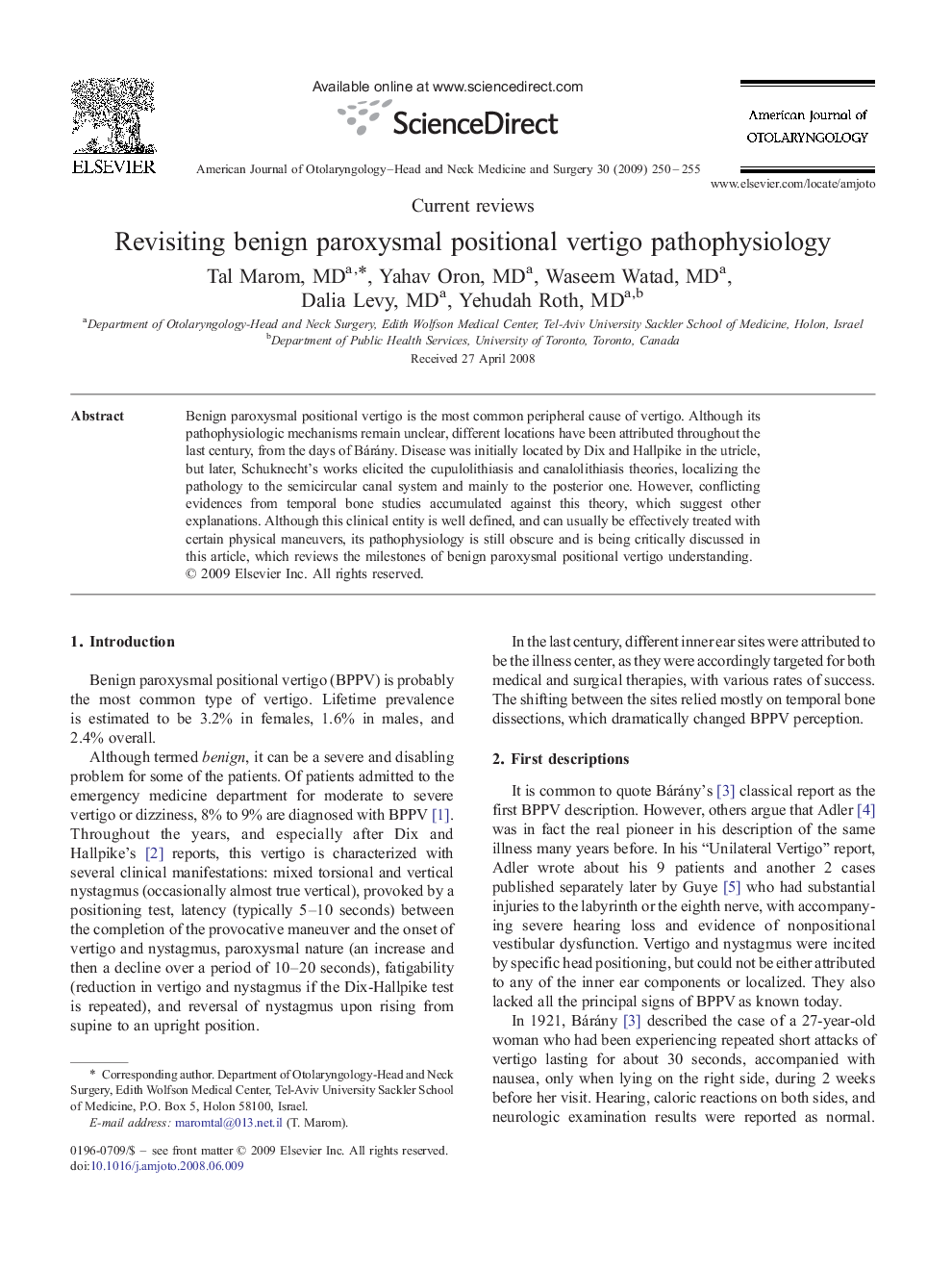| Article ID | Journal | Published Year | Pages | File Type |
|---|---|---|---|---|
| 4104229 | American Journal of Otolaryngology | 2009 | 6 Pages |
Benign paroxysmal positional vertigo is the most common peripheral cause of vertigo. Although its pathophysiologic mechanisms remain unclear, different locations have been attributed throughout the last century, from the days of Bárány. Disease was initially located by Dix and Hallpike in the utricle, but later, Schuknecht's works elicited the cupulolithiasis and canalolithiasis theories, localizing the pathology to the semicircular canal system and mainly to the posterior one. However, conflicting evidences from temporal bone studies accumulated against this theory, which suggest other explanations. Although this clinical entity is well defined, and can usually be effectively treated with certain physical maneuvers, its pathophysiology is still obscure and is being critically discussed in this article, which reviews the milestones of benign paroxysmal positional vertigo understanding.
